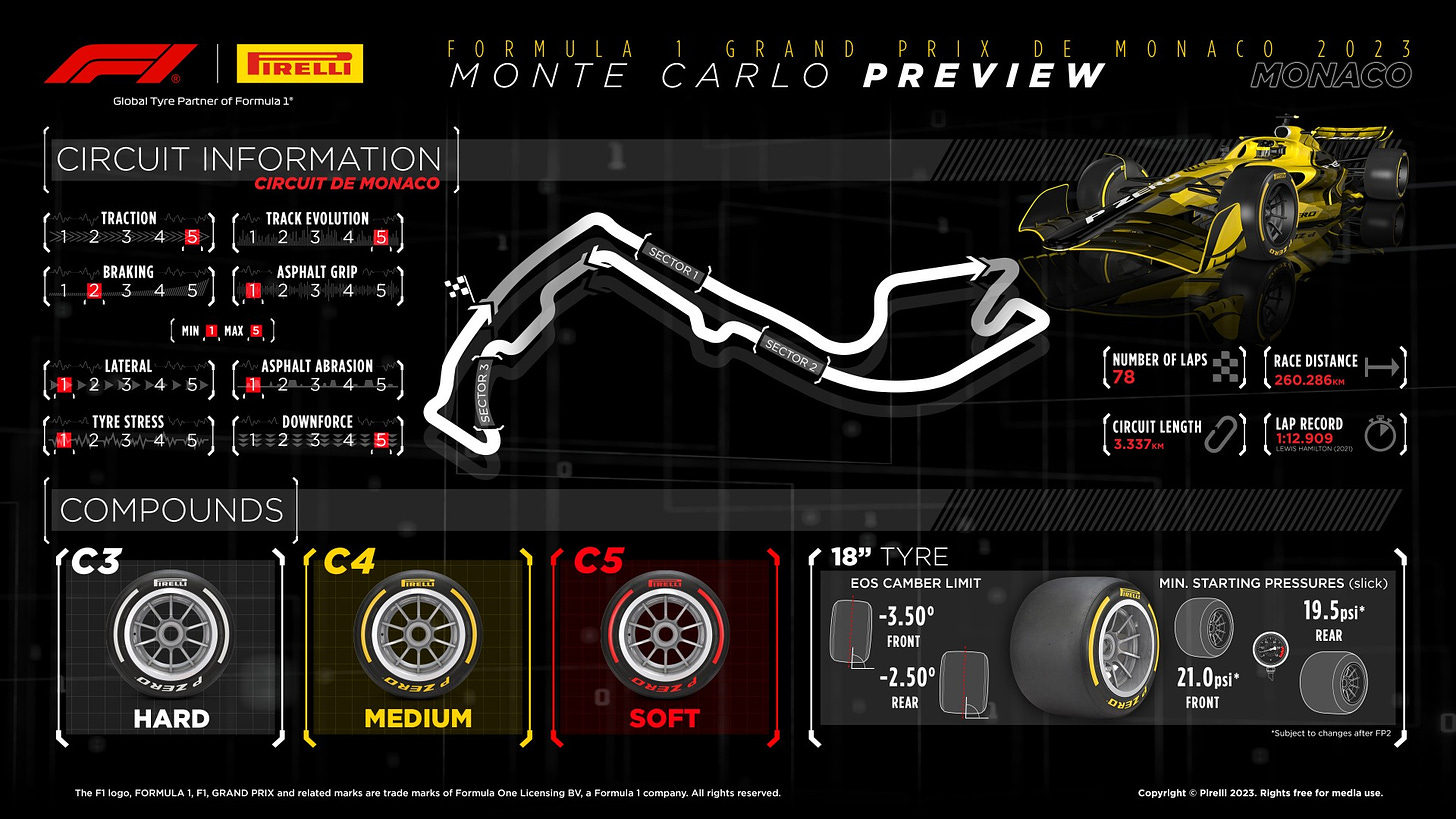Circuit de Monaco Characteristics
-
Clocking in at just 3.337 km in length, the Circuit de Monaco is the shortest track on the current F1 calendar. The next shortest circuit we visit is Zandvoort, which is nearly a full kilometre longer at 4.259 km
-
Monaco has the lowest average lap speed of the whole championship, at around 150kph

-
The race sees the highest lap count of any event with 78 tours of the circuit forming the Monaco Grand Prix. It is the only race that does not adhere to the FIA’s mandated 305 km minimum distance, measuring 260.286 km.
Unique Features of the Circuit
-
It also has the shortest run from pole position to the braking zone for the first corner, measuring just 114 metres. This means there is less opportunity to make a move on the opening lap.

-
Just 34% of the lap is spent at full throttle. That is significantly lower than the 43% of the lap at the Autodromo Hermanos Rodriguez in Mexico that is spent at full throttle, the next lowest total on the calendar.

-
Taken at just 45 km/h, the hairpin at turn six is the slowest corner F1 cars negotiate across the season. Being the tightest 180° corner on the calendar, special steering racks are used that allow for more steering angle.

-
It’s a fairly busy lap when it comes to gear changes, with 52 taking place each lap, but given the short track and the lack of long straights, other tracks such as Baku (68) feature many more gear changes.
Driver Performance
-
With three victories around the streets of the principality, Lewis is the most successful driver on the current grid at the Monaco Grand Prix. Fernando Alonso has taken two wins, whilst Max Verstappen and Sergio Perez have claimed one apiece.
Race Strategy and Car Setup
-
Qualifying holds far more importance in Monaco compared to other tracks because it’s very difficult to overtake in the race. The track layout is very narrow, there is only one DRS zone and there are few long straights and heavy braking zones to encourage overtaking. And it also places more focus on race strategy, as a way of making up places.

-
The corner speeds in Monaco are very low and so teams put the maximum downforce on the car. Teams also change things like steering geometry for the very tight hairpin and increase the ride height to deal with the bumpy nature of the Monaco roads.

-
The corner speeds in Monaco are very low and so we need to put the maximum downforce we can on the car. We also change things like steering geometry for the very tight hairpin and increase the ride height to deal with the bumpy nature of the Monaco roads.

Tyre Selection and Conditions
-
The three softest compounds in the Pirelli Formula 1 range will take to the track in Monaco: C3 as the P Zero White hard, C4 as the P Zero Yellow medium and C5 as the P Zero Red soft.
-
There’s very little grip and limited wear. The softest compounds offer a good level of adhesion when it comes to traction but mechanical grip is limited. This doesn’t prevent some sliding: a determining factor in surface graining.

-
All types of tyre brought to Monaco were used in the variable weather of last year’s grand prix: Cinturato Blue full wet, Cinturato Green intermediate, and all three slick compounds. On a dry track, the race is nearly always a one-stopper for everybody, but last year most drivers stopped three times.

-
The new Cinturato Blue full wet tyres that don’t need tyre blankets should have made their debut at Imola but could now be used in Monaco – as well as throughout the rest of the season.
Historical Legacy
-
From the seven races in F1’s inaugural 1950 season, only four of them remain on the calendar in 2023: the British, Monaco, Belgian and Italian Grands Prix. All four races take place on the same circuits they did in 1950: Silverstone, Circuit de Monaco, Spa-Francorchamps, and Monza.
-
The first-ever Monaco Grand Prix was organised in 1929 by Antony Noghès. The final corner of the circuit is named in his honour.
-
With 68 races having taken place and the most successful driver (in terms of wins) being Ayrton Senna. The legendary Brazilian was first past the chequered flag on every occasion from 1987 to 1993, with the sole exception being 1988 – when he retired on lap 66 while leading.
